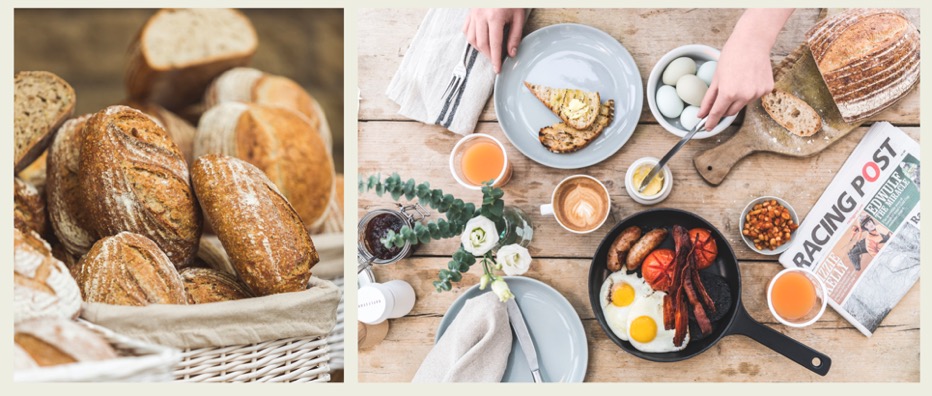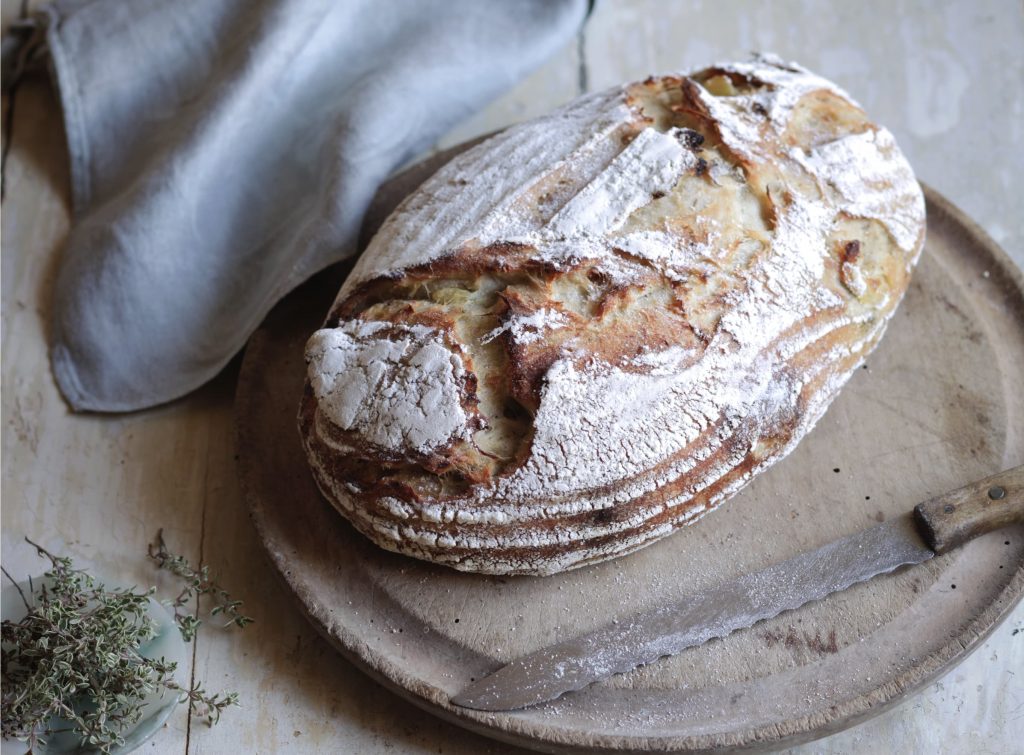
STORIES · 11.05.18
Food
Our teams at Daylesford and Bamford came together last week at a very special night for me: the launch party to mark the publication of my new book Nurture. It was a moving moment to walk into our shop in Notting Hill and see a little of everything that we do on show for our guests. Daylesford brought a little of the farm’s produce and skills, demonstrating the churning butter, the baking bread, the beekeeping, the butcher’s counter and the amazing vegetables from the garden. And the Bamford team brought their treatments and nourishing body products.
Since then I’ve had time to reflect a little more on what it is that we do and in particular to think about the artisan skills we continue to use and why I value them so highly. One of these is adopted by our bakery.
Baking good bread takes time. It’s a simple fact, yet it’s a philosophy that has for the large part been lost at some point in Britain’s bread-making history. At the farm, our bakery team has taken baking back to its origins. We make our bread following artisanal, hand-led methods, using no more than the basic ingredients loaves have been baked with for centuries: flour, water and salt. This nurturing and care give our breads a depth of flavour and our sourdough loaves a distinctive chewiness and tang. But these methods are also a reminder that a slower, simpler way of living and respecting the produce we are lucky enough to enjoy is not just about keeping traditions alive; it’s about ensuring a healthy future.
Below, I’m sharing one of the bread recipes from my book. Making a sourdough loaf at home does require more time and patience than a standard loaf, but you’ll be rewarded in terms of its more complex flavour, its wonderful chewy texture and in the benefits it brings to your body. If you don’t have your own starter, scroll down to the bottom to make your own. For other seasonal recipes and to find out more about what we do at the farm and through our other endeavours, you can purchase Nurture here.

Potato and thyme sourdough
This hearty, herby offering is perfect comfort food in the autumn and winter months; I think it makes wonderful cheese on toast, served with a little mustard on the side for a hint of heat.
Makes 2 loaves
500g waxy potatoes, such as Desiree, peeled
2 tbsp olive oil
500g strong white bread flour, plus extra for dusting
400g sourdough starter (see below)
1½ tbsp olive oil
280ml lukewarm water
2 level tbsp chopped thyme leaves
1 level tsp salt
Preheat the oven to 180°C/gas 4. Cut the potatoes in half and place in a baking tray. Toss with the oil and roast for about 50 minutes, making sure they don’t burn. Remove from the tray and cool, then cut into chunks.
Put all the ingredients, except for the salt and potatoes, in a sturdy kitchen mixer fitted with the hook attachment. Mix on a slow speed for 4 minutes, then on high speed for a further 5 minutes. Add the salt and mix again on fast speed for a final 8 minutes. Transfer to a floured bowl, cover with a damp tea towel and leave to rise in a warm place for a few hours. Depending on the conditions, this can take between 1 and 4 hours. The dough should be risen and doubled in size.
Turn the dough out onto a lightly floured surface and knead in the potato cubes so they are as evenly distributed as possible. Divide the dough into two even pieces and place in floured bannetons (proving baskets). Dust the bread liberally with flour and leave to rise again in a warm place until doubled in size, about 8 hours (you can do this overnight). If you don’t have bannetons, place the dough on a lined baking tray and shape into a country loaf before leaving to rise.
Preheat the oven to 220°C/gas 7. Transfer the risen loaves to a lined baking tray (if in banneton s), dust with flour and bake for about 25 minutes until a golden crust has formed. If you like, you can try adding a handful of ice cubes into the bottom of the oven before baking your bread. This creates steam, which in turn produces a better crust. Remove from the oven and transfer to a wire rack to cool.
SOURDOUGH STARTER
75g strong white bread flour
75ml lukewarm water
You’ll need to start this at least a week before you need it. Mix together the flour and water in a large warm sterilised jar (see page 201). Stir together well and leave at room temperature, uncovered. For the next 3 days remove a little of the starter and discard and then replace that amount with the same amount of flour and water and stir.
After 3 days it should be beginning to bubble and smell of fermentation. Cover the jar loosely with a tea towel. The starter should be very bubbly and ready to use after 6 days; if not, carry on feeding with the flour and water. When you remove some of the starter to use for baking, top it back up with 125g flour and 25ml lukewarm water and keep the jar loosely covered. If you are not baking for a while, leave the starter in the fridge, but uncover and bring to room temperature before using in order to activate it.
